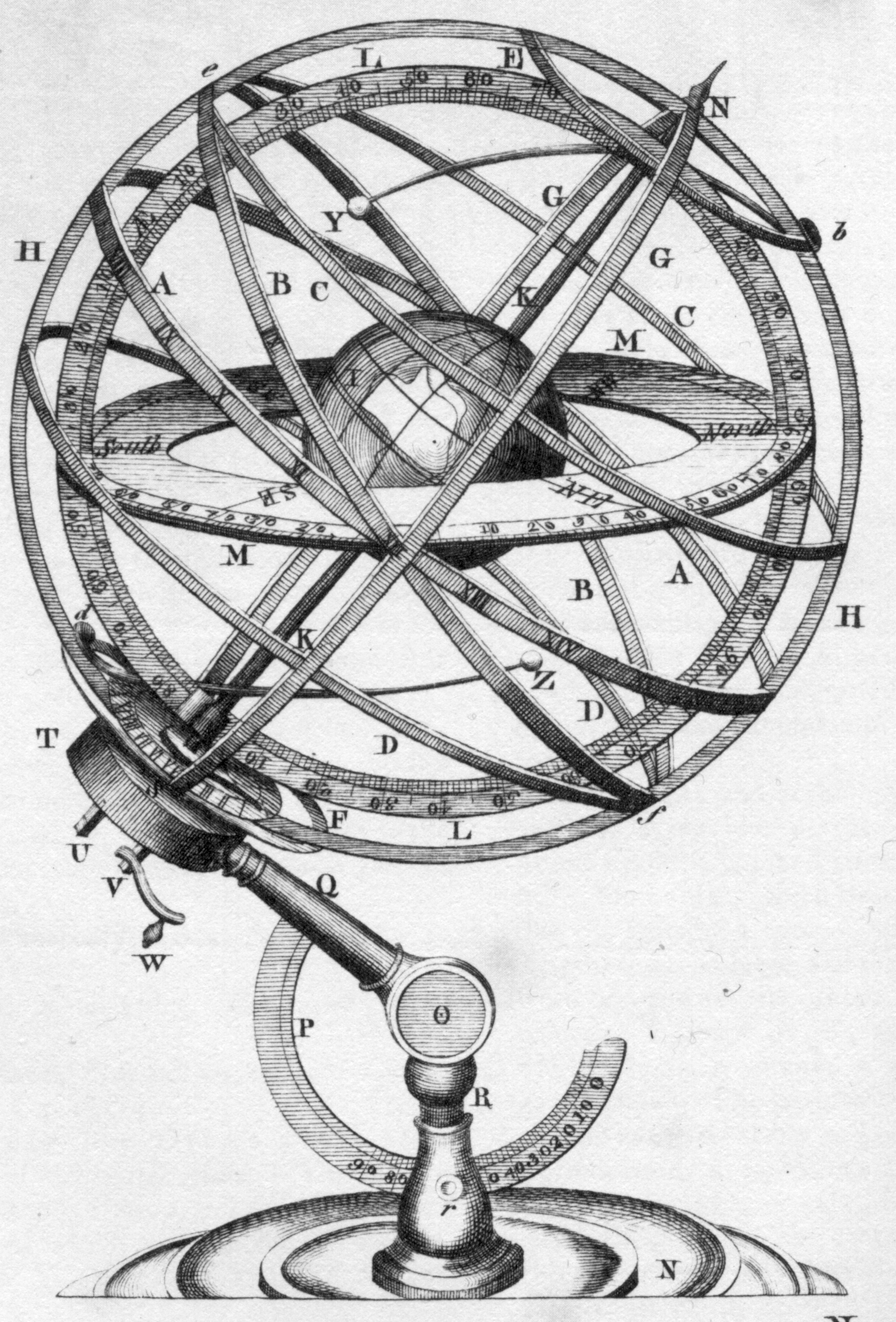Colure on:
[Wikipedia]
[Google]
[Amazon]

 Colure, in
Colure, in
Pi Aurigae
'. N.p. 22 Feb. 2008. Web. Astronomical coordinate systems {{astronomy-stub

 Colure, in
Colure, in astronomy
Astronomy () is a natural science that studies astronomical object, celestial objects and phenomena. It uses mathematics, physics, and chemistry in order to explain their origin and chronology of the Universe, evolution. Objects of interest ...
, is either of the two principal meridian
Meridian or a meridian line (from Latin ''meridies'' via Old French ''meridiane'', meaning “midday”) may refer to
Science
* Meridian (astronomy), imaginary circle in a plane perpendicular to the planes of the celestial equator and horizon
* ...
s of the celestial sphere
In astronomy and navigation, the celestial sphere is an abstract sphere that has an arbitrarily large radius and is concentric to Earth. All objects in the sky can be conceived as being projected upon the inner surface of the celestial sphere, ...
.
Equinoctial colure
The ''equinoctial colure'' is themeridian
Meridian or a meridian line (from Latin ''meridies'' via Old French ''meridiane'', meaning “midday”) may refer to
Science
* Meridian (astronomy), imaginary circle in a plane perpendicular to the planes of the celestial equator and horizon
* ...
or great circle
In mathematics, a great circle or orthodrome is the circular intersection of a sphere and a plane passing through the sphere's center point.
Any arc of a great circle is a geodesic of the sphere, so that great circles in spherical geomet ...
of the celestial sphere which passes through the celestial pole
The north and south celestial poles are the two points in the sky where Earth's rotation around a fixed axis, axis of rotation, indefinitely extended, intersects the celestial sphere. The north and south celestial poles appear permanently dire ...
s and the two equinox
A solar equinox is a moment in time when the Sun crosses the Earth's equator, which is to say, appears directly above the equator, rather than north or south of the equator. On the day of the equinox, the Sun appears to rise "due east" and se ...
es: the first point of Aries and the first point of Libra.
Solstitial colure
The ''solstitial colure'' is the meridian or great circle of the celestial sphere which passes through the poles and the twosolstice
A solstice is an event that occurs when the Sun appears to reach its most northerly or southerly excursion relative to the celestial equator on the celestial sphere. Two solstices occur annually, around June 21 and December 21. In many countr ...
s: the first point of Cancer
A solstice is an event that occurs when the Sun appears to reach its most northerly or southerly excursion relative to the celestial equator on the celestial sphere. Two solstices occur annually, around June 21 and December 21. In many countri ...
and the first point of Capricorn
A solstice is an event that occurs when the Sun appears to reach its most northerly or southerly excursion relative to the celestial equator on the celestial sphere. Two solstices occur annually, around June 21 and December 21. In many countri ...
. There are several stars closely aligned with the solstitial colure: Pi Herculis, Delta Aurigae, and Theta Scorpii
Theta Scorpii (θ Scorpii, abbreviated Theta Sco, θ Sco) is a binary star in the southern zodiac constellation of Scorpius. The apparent visual magnitude of this star is +1.87, making it readily visible to the naked eye and one of the ...
. This makes the solstitial colure point towards the North Celestial Pole and Polaris.
See also
*Celestial coordinate system
Astronomical coordinate systems are organized arrangements for specifying positions of satellites, planets, stars, galaxies, and other celestial objects relative to physical reference points available to a situated observer (e.g. the true hor ...
* Ecliptic
The ecliptic or ecliptic plane is the orbital plane of the Earth around the Sun. From the perspective of an observer on Earth, the Sun's movement around the celestial sphere over the course of a year traces out a path along the ecliptic again ...
* Celestial sphere
In astronomy and navigation, the celestial sphere is an abstract sphere that has an arbitrarily large radius and is concentric to Earth. All objects in the sky can be conceived as being projected upon the inner surface of the celestial sphere, ...
* Right ascension
Right ascension (abbreviated RA; symbol ) is the angular distance of a particular point measured eastward along the celestial equator from the Sun at the March equinox to the (hour circle of the) point in question above the earth.
When paired w ...
* Equinox
A solar equinox is a moment in time when the Sun crosses the Earth's equator, which is to say, appears directly above the equator, rather than north or south of the equator. On the day of the equinox, the Sun appears to rise "due east" and se ...
* Solstice
A solstice is an event that occurs when the Sun appears to reach its most northerly or southerly excursion relative to the celestial equator on the celestial sphere. Two solstices occur annually, around June 21 and December 21. In many countr ...
References
* * * * * Kaler, Jim. "Pi Aurigae."Pi Aurigae
'. N.p. 22 Feb. 2008. Web. Astronomical coordinate systems {{astronomy-stub